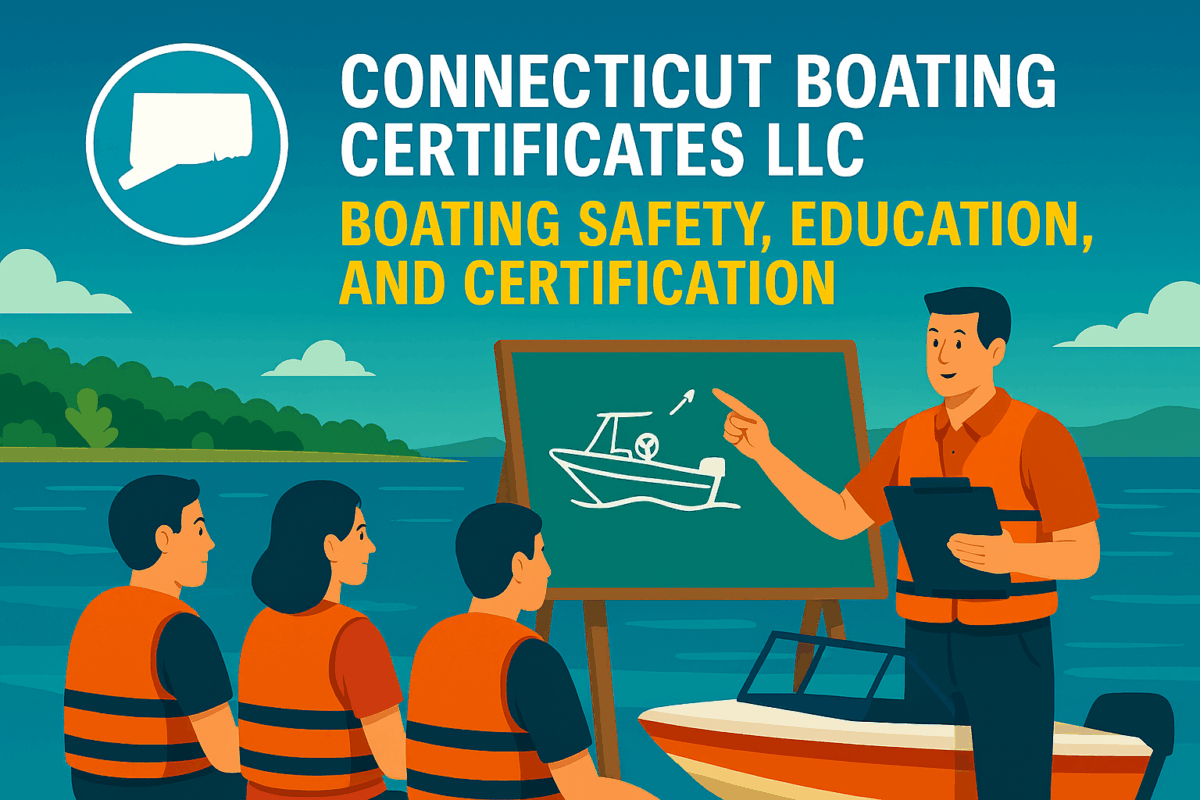Call: 1-800-832-7191

Connecticut VHF Procedures Explained
The Connecticut VHF Radio Procedures Explained PDF is a comprehensive resource designed to support boaters across the state in mastering one of the most essential tools for safe and responsible boating: the VHF marine radio. Whether you’re pursuing your boating certificate, renewing your boaters license, or simply looking to improve your boating education, this guide offers practical, easy-to-follow instructions that align with Connecticut’s standards for smart boating and proper mindset boating.
Why VHF Radio Procedures Matter
In the world of recreational and professional boating, communication is key. The VHF radio is not just a convenience—it’s a lifeline. Unlike cell phones, which may lose signal offshore, VHF radios provide direct access to the U.S. Coast Guard, nearby vessels, and emergency services. This makes them indispensable for boating safety, especially in Connecticut’s busy and diverse waterways.
The PDF begins by explaining the importance of VHF radios in maintaining situational awareness, coordinating with other boaters, and responding to emergencies. It emphasizes how proper radio use is a core component of responsible boating and is often covered in safe boating certificate courses throughout the state.
Core Procedures and Best Practices
The document walks readers through the essential procedures for using a VHF radio correctly. Topics include:
- Monitoring Channel 16: The international distress and calling frequency, which all boaters should monitor at all times.
- Making a Call: How to initiate contact clearly and professionally, including proper phrasing and etiquette.
- Emergency Protocols: Step-by-step instructions for issuing a “Mayday” call, including what information to provide and how to repeat your message until help arrives.
- Switching Channels: Guidance on moving to working channels (like 68, 69, or 71) for non-emergency communication, helping keep Channel 16 clear for urgent traffic.
These procedures are not just technical—they reflect the values of smart boating and boating education, encouraging boaters to think ahead, stay calm, and communicate effectively.
Legal Requirements in Connecticut the Connecticut VHF Radio Procedures Explained
Connecticut law requires boaters to follow specific communication protocols, especially when operating motorized vessels. The PDF outlines these legal standards and explains how they relate to obtaining a boaters license or boating certificate. It also highlights the role of the U.S. Coast Guard and NOAA in enforcing these rules and maintaining order on the water.
Understanding these regulations is critical for anyone pursuing a safe boating certificate or participating in boating education programs. The guide ensures that readers are not only compliant but also confident in their ability to operate safely and legally.
Maintenance and Equipment Checks
Beyond procedures, the PDF stresses the importance of maintaining your VHF radio equipment. It includes a checklist for pre-departure inspections, covering:
- Antenna integrity
- Power supply and battery levels
- Corrosion-free connections
- Audio clarity and signal strength
These maintenance habits are part of the proper mindset boating philosophy—being proactive, prepared, and detail-oriented. They’re also emphasized in Connecticut’s boating education courses, which aim to produce knowledgeable and responsible mariners.
Training and Certification Opportunities: Connecticut VHF Radio Procedures Explained
The guide recommends training opportunities through organizations like Connecticut Boating Certificates LLC, which offer hands-on instruction in VHF radio use as part of their boating certificate and safe boating certificate programs. These courses help boaters build real-world skills, from emergency communication to routine coordination with marinas and fellow boaters.
By enrolling in these programs, boaters not only meet state requirements but also embrace the principles of smart boating and responsible boating. The PDF encourages readers to seek out these certifications and continue their education to stay current with best practices.
Emergency Preparedness and Mindset
One of the most valuable sections of the PDF focuses on emergency preparedness. It explains how VHF radios can be used during severe weather, mechanical failures, medical emergencies, and other high-stress situations. The guide teaches boaters to remain calm, speak clearly, and follow protocol—skills that are central to proper mindset boating.
This section reinforces the idea that boating safety is not just about equipment—it’s about attitude, awareness, and readiness. By adopting a responsible mindset, boaters can protect themselves, their passengers, and others on the water.
Who Should Read This Guide
The Connecticut VHF Radio Procedures Explained PDF is ideal for:
- New boaters preparing for their boating certificate
- Experienced mariners renewing their boaters license
- Students enrolled in boating education programs
- Families and recreational boaters seeking safe boating certificate training
- Anyone committed to smart boating and responsible boating practices
Whether you operate a sailboat, powerboat, kayak, or personal watercraft, this guide provides valuable insights that enhance your safety and confidence on the water.
Conclusion: A Must-Have Resource for Connecticut Boaters
In summary, the Connecticut VHF Radio Procedures Explained PDF is more than a technical manual—it’s a cornerstone of boating education and a vital tool for anyone serious about boating safety. It supports the goals of earning a boating certificate, maintaining a boaters license, and practicing smart boating with a proper mindset.
By following the procedures outlined in this guide, boaters demonstrate their commitment to responsible boating and contribute to a safer, more enjoyable experience for everyone on Connecticut’s waterways.
Download the PDF today and take the next step toward becoming a confident, certified, and safety-conscious boater.
